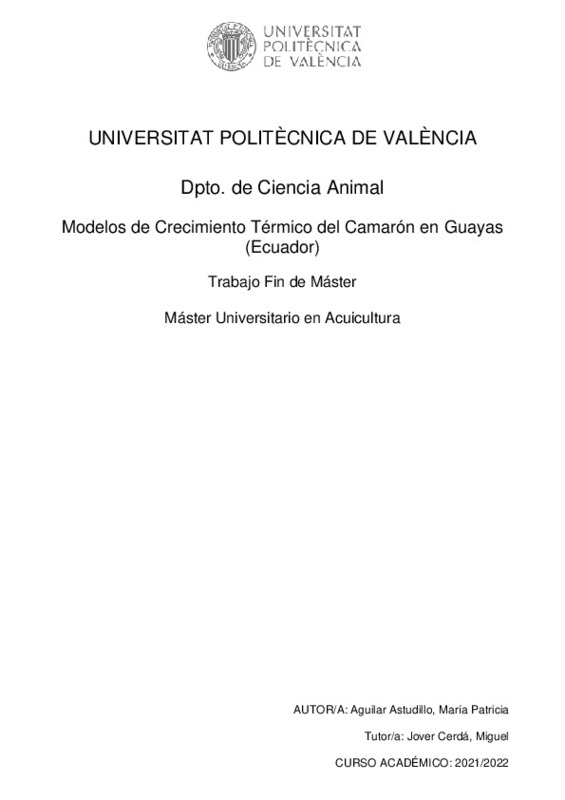JavaScript is disabled for your browser. Some features of this site may not work without it.
Buscar en RiuNet
Listar
Mi cuenta
Estadísticas
Ayuda RiuNet
Admin. UPV
Modelos de crecimiento térmico del camarón en Guayas (Ecuador)
Mostrar el registro completo del ítem
Aguilar Astudillo, MP. (2022). Modelos de crecimiento térmico del camarón en Guayas (Ecuador). Universitat Politècnica de València. http://hdl.handle.net/10251/190332
Por favor, use este identificador para citar o enlazar este ítem: http://hdl.handle.net/10251/190332
Ficheros en el ítem
Metadatos del ítem
| Título: | Modelos de crecimiento térmico del camarón en Guayas (Ecuador) | |||
| Otro titulo: |
|
|||
| Autor: | Aguilar Astudillo, María Patricia | |||
| Director(es): | ||||
| Entidad UPV: |
|
|||
| Fecha acto/lectura: |
|
|||
| Resumen: |
[ES] Los modelos de crecimiento en el sector acuícola han tenido un amplio uso para las distintas especies producidas, siendo uno de los factores primordiales el de llevar a un animal al peso estimado en el menor tiempo ...[+]
[EN] Growth models in the aquaculture sector have been widely used for the different species produced, one of the main factors being to bring an animal to the estimated weight in the shortest possible time, which translates ...[+]
|
|||
| Palabras clave: |
|
|||
| Derechos de uso: | Reserva de todos los derechos | |||
| Editorial: |
|
|||
| Titulación: |
|
|||
| Tipo: |
|







